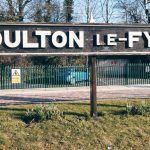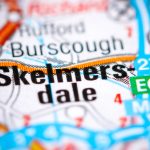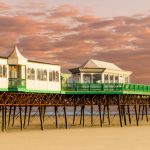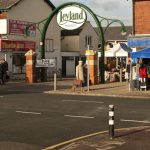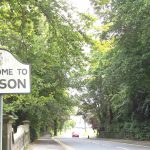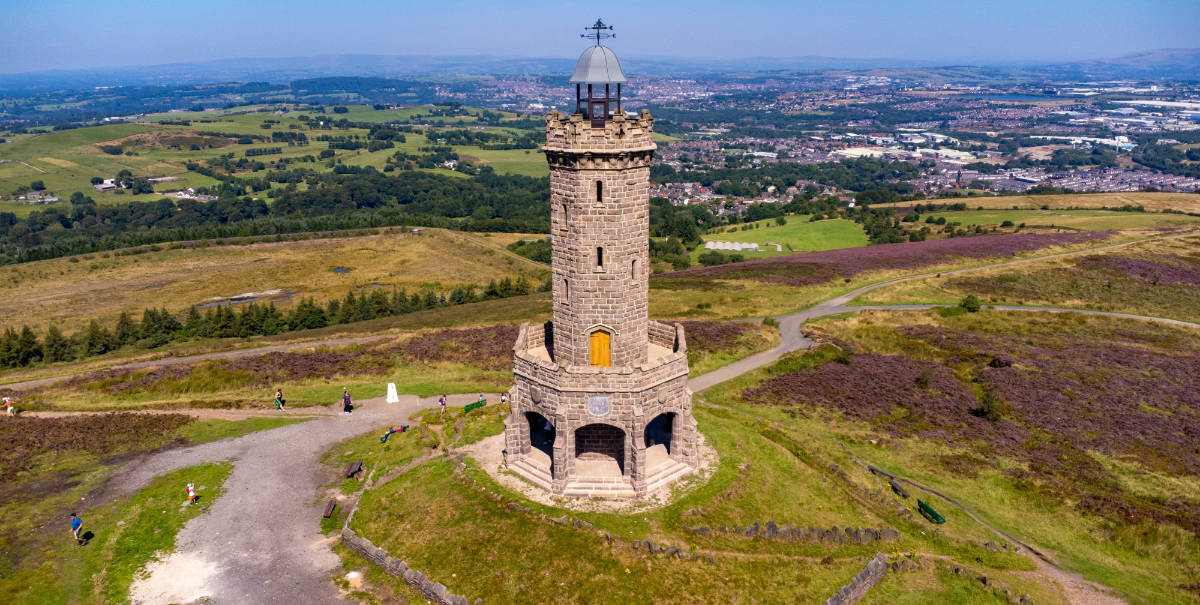
This market town could be the perfect place to take your family for a day trip, town break, or long weekend. Here’s what you need to know before you visit.
Darwen is a lovely market town in Lancashire, best known as a textile manufacturing town during the industrial era. The town has a population of around 31,000 people and shares a civil parish and district with Blackburn. Situated against the backdrop of the stunning River Darwen, this is one town that has plenty of potential as a staycation destination to make memories.
Let’s get to know the history of this town, take a look at the best things to see and do here, and see if we can drum up a little homespun enthusiasm. Here’s all you need to know about visiting Darwen, including how to get there.
Early Days in Darwen
The town grew up around a ford in the river. Situated in the upper valley of the river, the town crosses Bradshaw Brook. In the early days, there was a ford in the stream, too. Records show that the town’s soil is clay and sand. When they dug out the reservoir, they found 2ft of peat on top of hundreds of fallen tree remains. The town covers about 5,000 acres and growing. Back in the early days, it would be no more than a few houses.
Darwen has seen occupation in the Bronze Age. A round barrow in the area, aged to 2000BC, tells us that there were people here. The barrow is a funeral area where archaeologists found urn burials.
As early as 1177, Henry de Lacy owned a nearby manor. Others peppered the nearby countryside. Names of owners include Robert Banastre, the Baron of Newton in Makerfield.
Medieval Times in Lancashire
In 1208, local records name the River Darwen, the River Derwent. This translates to the river where the oak trees grow.
The oldest buildings in the area include a farmhouse at Bury fold. The house dates to 1675 but earlier parts date to 1557. Little of the medieval town still exists but Roman maps of the area record a Roman road that cut through town. The Romans always kept soldiers in Lancashire. Throughout every invasion, from the Romans to the Normans, occupying forces have struggled to control the north. The Romans went so far as to build a wall.
The Normans didn’t even bother past the border. They built lots of forts in the north of the country, most of which failed to keep the local population in check. Evidence of this lies in the Domesday Survey. They didn’t bother documenting the northern towns because they feared the inspectors wouldn’t come back alive. For that reason, we don’t know how big Darwen was in 1086 even though we know how many cows were in Essex at that same time.
By 1720, the town was already a noted cotton printing centre. The weavers here created checked cotton, weaving on hand looms. The town filled up with yeoman, husbandmen, and Chapman. Webster was a popular name.
Fun Facts About Darwen
Every town has some local gossip that needs to be exposed to be believed. We shed some light on the best fun facts about Darwen right here, so listen closely. We shall say this only once…
- Darwen residents are colloquially known as Darreners.
- Local news sources say that Gandhi visited here in 1931. We did more research and discovered this is 100% true. There’s photographic evidence. The champion of peace and love came to Lancashire at the behest of the well-meaning Davies family.
- The Beatles played at the Cooperative Hall in Darwen town before they were famous. They headlined an event called the Greatest Teenage Dance that was run by the Darwen Youth Club.
- Paul Weller sometimes frequents the Astley Bank Hotel in town. Keep an eye out, he’s the most famous person you are likely to meet in the area.
- Staying in Darwen? Go climb to the tower and check out the view. It’s like an initiation ceremony.
OK, so not all facts are fun facts. We misnamed the section a little. Still, Darwen is a pleasant place to visit and an even better place to live. Most of those facts were optimistic at least. Darwen is the people’s pride and joy.
The Industrial Revolution
In 1797 the old road that ran through the town and across a ford in a stream closed. Local builders replaced it following a petition from local landowners and farmers. The rate of goods that travelled through Darwen was lamentable before this. The industrial revolution relied upon transporting goods, so a new road made things happen for the town in a big way. After this, it truly opened as a market town. Toll bars on the road at Dove Lane, Golden Cup and Ewood stayed in place right through until 1877.
Industries in the town focused on weaving. There were other industries. Papermaking was popular here thanks to the perpetually damp climate of Lancashire. The whole of Lancashire was known for coal mining. Wherever there was coal mining, smelters were nearby. Locals quarried stone from the nearby hills and bleaching and printing onto cloth were big industries. Quarrying died out first and the other industries faltered one by one. Coal mining and papermaking lasted the longest.
The Train Arrives
The town received a railway in 1848 courtesy of the Bolton, Blackburn, and Hellifield branch of the Lancashire and Yorkshire Company. The train line went through the 2,000-yard sough tunnel under the local moors. In the same year, 12 people died when the banks of the reservoir collapsed below Radfield Fold. The landslide occurred after a huge storm with heavy rainwater and flooding. Records say there was great destruction of property and that the 12 persons drowned. We forget that people drown in reservoirs. We think it’s down to how careful we are, but the weather is a terrible mistress.
By 1812, Samuel Compton had become a known name. Calico bleaching died out around this time. Block printing works increased hand weaving and dying production. Samuel Compton invented the spinning mule and Richard Hilton brought in paper-making in 1836. Paper staining happened as of 1841. After this, early wallpaper manufacturing took place in town. In 1866, local leaders created the Industrial Co-operative Society’s Stores, which contained two large halls where members could hold meetings.
Cotton spinning began in Darwen as early as 1820. Iron and brass foundries, machine works, sanitation pipe manufacturing, collieries, and flag and stone quarries existed here. There were both brickworks and ironworks. It was a busy place. The largest cotton mill company was Eccles Shorrock & Company. They went bankrupt after the Indian boycott. The mill has recently sold for £12 million. Scottish industrialist Andrew Carnegie sponsored the building of a school and a technical college here during the Industrial era.
Modern Day Darwen
In 1901 there were 39,145 people in Darwen. As late as 1907 there were still 57 weaving mills and 8 spinning mills in town. There were 10 paper mills, too. As we mentioned, the conditions for mill workers were not good in Darwen. So much so that a wealthy philanthropist family convinced Gandhi to make a detour when he was in Britain conferencing in London. This visit prompted the Indian boycott of British cotton, which did eventually improve conditions. However, cotton weaving didn’t last much longer afterwards.
The champion of peace and love came to Lancashire at the behest of the well-meaning Davies family. The whole textile industry ran on slavery. The Davies family wanted to change working conditions for the mill and textile workers here. Gandhi came to see the conditions for himself.
The subsequent Indian Independence Movement caused a boycott of British textiles after this. Not only were the workers living in terrible conditions and working for a pittance, but the cotton also they were spinning in the early days of the industrial revolution was hand-picked by slaves across the sea. Wealthy British landowners have a lot to answer for in the annals of history.
WWII
Darwen was a cotton town during both wars. During WWII, the town received 5,000 evacuated children from Newcastle. As well as taking in children, the people clubbed together to raise enough money to fund a spitfire. It launched in 1940. The town discussed dismantling the tower in case German bombers used it as a landmark. The tower survived.
Modern Darwen
Nowadays, the population is just under 32k well below the highest recorded population of 40,000 in 1911. Modern businesses in town include Crown paint, who named its Darwen Satin Finish range after the town. The town produces Perspex bath and shower panels, and local factories made Spitfire canopies here. Up until 2009, Darwen was part of Blackburn, but in ’09 it gained its town council again. Since then, Darwen has gone from strength to strength as an industrial-era market town with a rich history and plenty of opportunities.
Famous People from the Area
Every town in the UK has a number of famous names attached. Most settlements bigger than a few thousand people have more than one. Let’s find out what the biggest famous names might be in Darwen for our perusal. Famous people from Darwen include:
- Samuel Crompton was an important Darwen figure during the Industrial Revolution. He invented the Spinning Mule. This piece of technology boosted the production of the textile mills, allowing the property owners to make more money.
- The painter and illustrator Margaret Chapman came from Darwen.
- Many footballers – this is a northern town. Footballers from Darwen include Fergus Suter, Sam Wadsworth, Mark Patterson, and Harold Readett.
- Many cricketers, including Alex Davies, Alan Bolton, and Brian Booth.
- The Bee Gees lead guitarist Alan Kendall was born here.
- Dick Burton, was a golfing champion back before WWII.
- James Watson, the author.
There is an impressive list of names of people who came from Darwen. Lancashire really does include a talented mix of celebrities. You’re unlikely to brush shoulders with Beyonce at the supermarket, but you never know. Dream big.
The Best Things to See and Do in Darwen, Lancashire
When you do decide to visit Darwen and see what all the fuss is about, make sure you take the time to view these attractions. These are local and visitor-approved.
Historic sites
Asides from the Jubilee tower which we will cover momentarily, there are not a lot of historic sites in Darwen. Those we do have to revolve around its industrial heritage. In fact, there is a heritage trail that you can follow between Blackburn and Darwen. It takes you through all the alleyways the workers would have used, points out the style of buildings and streets, and covers a total of 31 different historical sites between the two towns.
Landmarks
On the summit of Beacon Hill, overlooking the town centre, you will find the Jubilee tower. Rather than commemorating Her Late Majesty, this tower has dominated the Darwen skyline since 1898. The town built this tower to commemorate Queen Victoria’s reign. The tower is 85ft high and 1225ft above sea level. Locals love to climb the hill to enjoy the view. It’s quite romantic with the right sunset. The surrounding moors are also worth an explore, as long as the weather is good and it’s not a full moon – ok we couldn’t resist adding An American Werewolf in London reference!
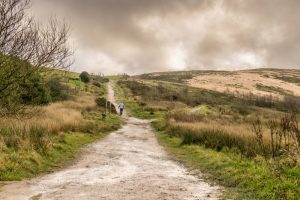
Image: john paul slinger/Shutterstock.com
Out & About
If you like a hike around then put a trip to Entwistle Reservoir on your agenda. It’s a man-made lake which originated in 1832 with the building of a dam. The path around it is relatively flat and it takes around an hour to walk around. There is a car park there too which is handy as it is around five miles out of Darwen. Edgworth village is nearby and worth a visit too, so you can make a day of it.
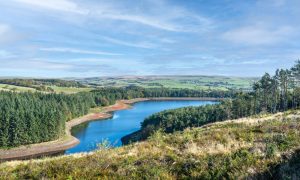
Image: Mark D Bailey/Shutterstock.com
Galleries
There are not many galleries in Darwen. You can visit the nearby museum and art gallery in Blackburn. You can also go to the Whitaker Museum and Art Gallery for a similar experience. This gallery is a little larger than the Blackburn one. They do a lot more sculpture work here. Sometimes they hire actors to perform roles and recreate historical figures. It’s fun for the little ones on a weekend.
Museums
As close to a museum as you can get, take your family to learn about the town at Darwen Heritage Centre. Used as an arts venue on occasion and run by volunteers, the centre has exhibits based on the town and its history. They have lots of community groups here, regularly running educational workshops for local kids. If you move to the area, this is like a hub of community activity to get involved in.
You can take the 4-mile trip into Blackburn next door and go and see the Blackburn Museum & Art Gallery. This museum offers community arts and crafts groups as well as giving local artists a showcase for their work. They run regular exhibits and welcome school groups. The museum contains a shop where you can pick up souvenirs.
Outdoor Attractions
Bold Venture Park is one of the best-known parks in town. Opened in 1889, locals describe it as historic and picturesque. The park connects the town to the tower. The land has an interesting formation with few flat areas. This is because it lies in an area where stone quarrying took place. You can see rewilding here… a lovely addition to a pleasant walk under the oak trees.
You should go for a walk in Sunnyhurst woods if you are in town. This little nature trail is a wonderful way to enjoy some forest bathing. There are 85 acres of woodland here, so it’s sizeable enough to get lost in if you want to. There is a visitor centre too, so you can go there to learn about all the animals and habitats the wood contains.
Sports
Crown Paints run a Sports and Social club in the area. This is a way of paying back the challenging work of their employees. It’s rated as some of the best nightlife in Darwen.
The town has its own football team. Rather than starting back in the 19th century, AFC Darwen came together in 2009. You can catch a game, join them in the pub, or buy a strip here.
If you prefer a good golf course, head to Darwen Golf Club. We will warn you in advance that this course features rolling hills and wide spaces with plenty of wind. It’s out on the moors. You might even see a giant roaming cat if you are lucky.
Recreation
You can visit Darwen Leisure Centre, or BwD Leisure Centre, which does have a pool although it has been closed for maintenance. There is another pool in Blackburn Sports & Leisure centre in the meantime. The BwD centre still has a fitness centre with the main gym attached. It offers plenty of fitness classes with sports halls for hire and courses on offer.
Shopping and Retail
One of the favourite stores in town is My Vintage. This little vintage boutique is like stepping back in time. It’s ideal for those with an alternative style of dress. You can also enjoy a tour of the local brewery. Hopstar brewery has a few local ales to try and is well worth the visit… adults only.
Asides from these few shops, we recommend that you peruse the stores in the famous Darwen Market Square. This place has seen footfall since back in the 1700s. Shop knowing that you are walking in the footsteps of thousands of market traders that have gone before. As well as the market square, make the trip north into nearby Blackburn and pick up what you need from their mall.
Where to Stay
There is a Travelodge in Blackburn and we know that brand has consistent quality. Visit the Astley Bank Hotel if you want a luxurious place to stay in Darwen. This lavish hotel is often home to wedding parties. You can even stay at the Whitehall Hotel and Distillery for something a little different. Darwen town centre has multiple events, live shows, and festivals throughout the year. There is a Vegan market in November. The town centre features The Weavers Bird after the council invested £1.5 million into the area. The Weavers Bird is the centrepiece to the town centre. IT was created by artist and designer Liam Hopkins.
Where to Eat
We highly recommend Tapas in all shapes and forms, so visit the Mangiamo Tapas Cocktail and Wine Bar. There’s also the Essence Mediterranean Restaurant and bar for all those that enjoy that European flavour but don’t like to share. It’s understandable, we don’t like to share food either. There’s Flames Bar and Grill if a good old British steak is your preference.
Where to Party
If you want a traditional sit-down pint, you should try the Sunnyhurst Pub or the Anchor Darwen. Sunnyhurst is a friendly local with neat décor and an excellent choice in ales. The Anchor has a similar country-pub feel with limited outdoor seating. Younger drinkers might prefer Level One while you can get a good cocktail at The Vault.
Other Notable Lancashire Attractions
There are loads of towns that surround Darwen that make this area of the country a good place to stay. If you are spending longer than a few days in the area, check out the following sites:
- Visit Colne and enjoy a night at the hippodrome theatre
- Go to Clitheroe and tour the castle
- Take a trip to the market in Chorley
- Visit Accrington, home of a world-famous brick
- Go and learn about the textile industry in Wigan
Go and explore Lancashire. The north is not as uninviting as you think.
How to Get to Darwen?
You might need some directions to get to Darwen and we will do our best not to make you lost in the English countryside. You can eat most of the berries, don’t worry. You’ll survive. Stay away from the red ones with the fuzzy pods inside.
By Road
Darwen sits on the M65 just north of the M61. Make of that what you will.
By Rail
Darwen train Station is on the Northern Line.
By Air
Newcastle International Airport is your nearest airport.
By Sea
Darwen is landlocked but you could sail the river.
Got Another Five?
Still bored? How could you be after all that? If you want more, are still on a break, or want to hunt down your own town’s tour, you can head to our website and have a gander. Otherwise, pop us a follow on Facebook to help the Five Minutes Spare project grow.
Header Image: DRWhiting/Shutterstock.com
